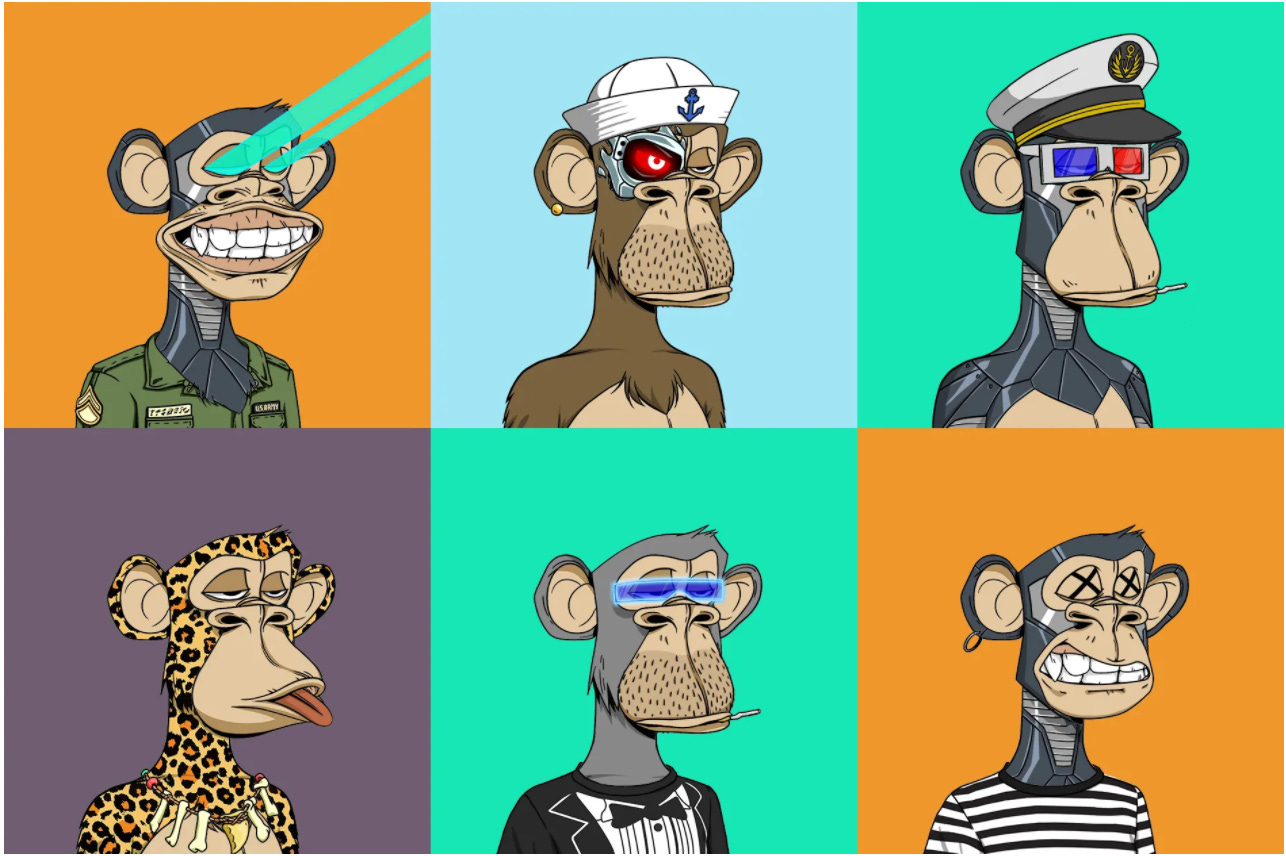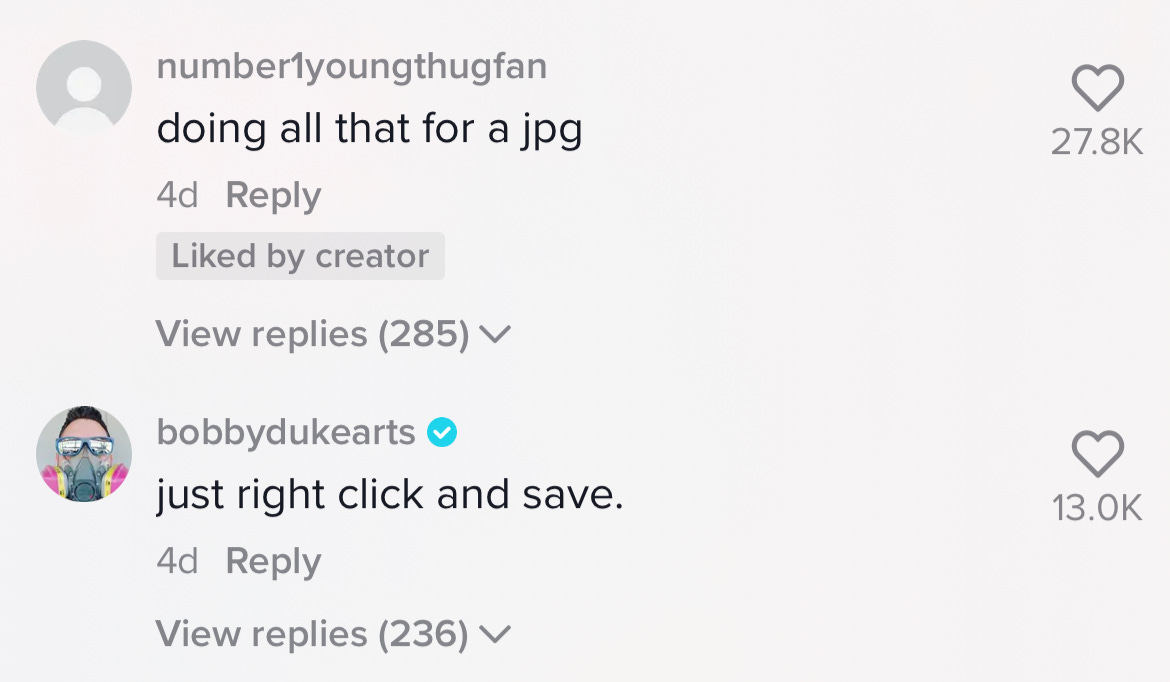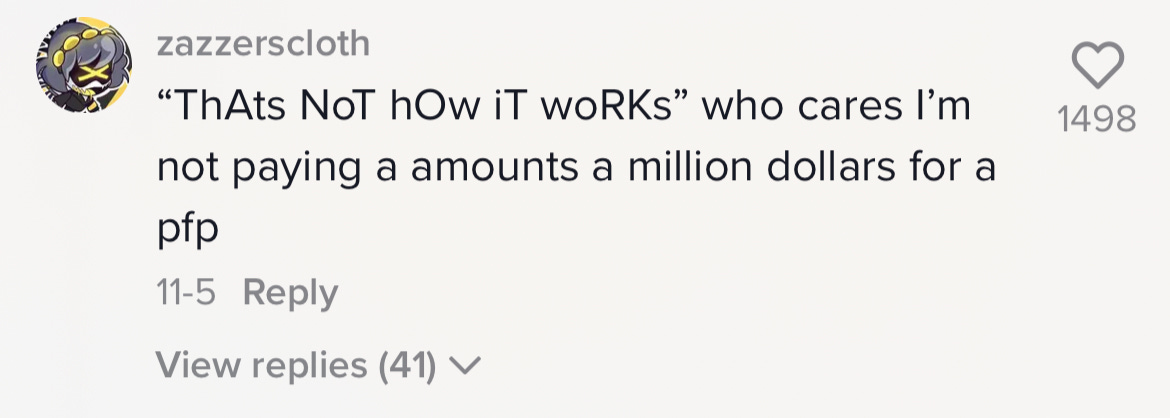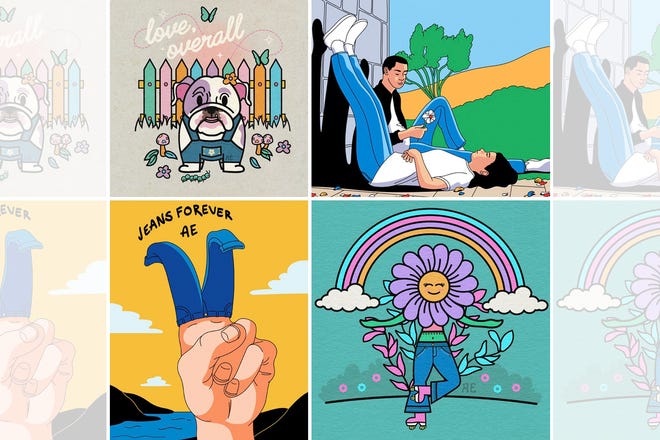Howdy :) and a warm welcome to the new friends who joined us after the last piece!
A quick disclaimer: the last part (I) was not entirely clear in its implications. So to clarify:
I believe Gen Z will adopt NFTs en masse. But in order for that to happen, something needs to change in the way we talk about NFTs and the way we build and sell them for Gen Z.
A brief summary of the last piece (full version here):
Gen Z = the Screenshot Generation, growing up with screenshots as definitive proof and evidence. This poses some unique challenges for growing adoption within culture, as that's the main selling point of NFTs.
Last time, we talked about ownership. NFTs verify ownership - but to Gen Z, so do screenshots. So for the generation that has grown up with pics or it didn't happen, how can NFTs become adopted within culture for Gen Z?
The selling point for Gen Z we predict will not be the proof of ownership - so what can it be?
It's left to the 2 other factors introduced:
Identity: what is the importance of having a unique digital identity to Gen Z? what is the role of the profile picture in creating or displaying that sense of identity?
Exclusivity: is exclusivity attractive to Gen Z? what factors have shaped our understanding and relationship with exclusivity over time?
The profile pic
A quick scroll through tech or marketing twitter will have you wondering what those weird-looking avatars in everyone's profile pics are. If you're familiar with the space, you'll know they're apes, cryptopunks, or any other NFT that people are using to show off their status. If you feel insulted by that (because you have one rn as your profile pic), my apologies. But it's true.
You won't find many if any Gen Z'er at all with their profile pic as an NFT. For two main reasons:
We simply don't have disposable income. The oldest of Gen Z'ers (24/25ish) mayyy have one, but that's about it. The rest of Gen Z, you know, the 14-22-year-olds that don't earn a salary from some of the world's biggest companies, are spending our money on Chipotle, Starbucks, and the big Shein holiday sale.
But I know Gen Z'ers are spending money on other expensive things to show status (like luxury goods), so why not an NFT?
That money that's being spent from Gen Z on status? It most likely is not ours. Thank you, parents! And if it is ours, we're taking the tangible goods right now; that new sneaker drop was 🔥 and we had to cop. Gotta show off those fresh kicks in school.
Ok yes, there's a third - and it's the meaning of the profile picture to Gen Z, and also the focus of the rest of this piece.
The meaning of profile pics to Gen Z
It started with Facebook
The first reference to a profile picture Gen Z had was on Facebook. Any time we would switch, our networks got a notification it changed. So because of that, there was immediate importance and pressure on having a good one, and if you changed it, it would have to be a good change, otherwise, your entire network would see a bad pic. Ouch, nobody wants that.
Then came Instagram.
Instagram was similar in this regard - no notifications, but your profile on insta serves as an instant identifier - it's a way when you're stalking someone without following them to get a glimpse of who they are, and it’s a way friends recognize you.
What about Snapchat?
Snapchat has used Bitmojis since day one. And from day one, Gen Z has placed importance on making sure their bitmoji is representative of who they are. Or who they want to be. The snap bitmoji is an expression of identity, and because it is so customizable, enables a freer representation of how that is expressed.
And Twitter? (extra focus here bc this is where NFT pfps are most popular)
Twitter's latest report on Gen Z confirms many of our insights; Gen Z'ers are coming to Twitter to engage in conversations with brands, celebrities, political issues, but more than anything to get their news. Twitter is a source of information for Gen Z, whether it's learning about the latest meme ("38% of Gen Z come to Twitter to see what the latest memes and viral internet trends are") or just coming to check out sports highlights. One Gen Z'er (22M) we asked said:
"I would say I primarily go on twitter to see news, but like news, I specifically care about which I feel like my twitter feed has curated well, for better or for worse. I also go on to see memes. To laugh. I’m going on twitter to look at celebrity news."
Another said (21F): “I use twitter for everything. News, cute photos and messages to brighten the day, dark humor and comedic intake, keeping up with how friends are doing, and sharing my emotions or silly thoughts. But my pfp? I place no importance on my pfp for twitter”.
What Twitter is NOT for Gen Z is a source of identity showing - Gen Z'ers are not coming to Twitter as a place to show status. Because they’re using the platform for information and news, profile pictures are less important - we have other places to show status if necessary (hi IG).
Twitter Marketing Insights on Gen Z Article
Introducing TikTok.
TikTok has changed the way profile pics are viewed and understood in culture for Gen Z. TikTok has memeified the profile pics - in the best way possible. Every other week, there's a new trend causing people to change their profile pics to be all the same. Whether it's a hamster cult, a car cult, people putting the Scream guy in their profile pic (pfp), or (as we saw in 2020) Black Lives Matter pictures, the uniqueness of the profile pic on TikTok does not hold the same meaning. Perhaps it had to do with Charli, the most popular person on the platform (for a long, long time) who famously had her pfp as a Black Lives Matter picture for months (not sure when she changed it, but it was up for a long while).
What you'll also see on TikTok is people in the comment section of a video asking to identify the owner of something lost all changing their pfps to that person to pretend to be that person. I wish I could find them right now because that probably sounds crazy, but I've seen it too many times to count. Many Gen Z’ers use pfps on TikTok to show they’re in tune with culture, or just straight up to have a good time and be funny.
And, as I'm sure you have seen, Emily Zugay, the world's most popular logo designer, has also memeified the brand logo on TikTok, with brands in the comment sections thirsting for one of her ~ spectacular ~ designs.
So what
So with all that being said, even with platforms like Twitter verifying NFTs as profile pictures, I'm very skeptical Gen Z will rush to use these as profile pics.
In the last piece we talked about how Snapchat helped create behavior-changing expectations about the permanence of a photo. With content disappearing forever after opening, Gen Z has become more and more comfortable with impermanence. What we see with profile pics seems to reflect this comfort with impermanence; people are consistently updating their pictures, changing and adjusting their “brands”. Impermanence has become a norm in culture; we expect it. So why buy an expensive pfp to have it change in a few weeks, or even days?
But sure, NFTs go beyond the pfp as it relates to displaying identity. Brands like American Eagle and Atari have already demonstrated the way NFTs will come to integrate and dominate the virtual world with avatars. And this - this is where I believe the intersection of NFTs and identity plays a major role for Gen Z. Gen Z'ers are spending absurd numbers on Fortnite Skins, in-game accessories, and any way for their avatars to look cooler and seem more legit. That is where status matters - not in the pfp.
But yet - there is still so much hesitancy around these tokens for Gen Z. Quick glances through TikTok comments will give you all you need to know about how young audiences see these tokens, at least as they are understood and seen right now.
So what will bridge the gap and encourage mass adoption of NFTs within Generation Z? It won't be the profile picture - so what will do it?
Good question - and good answers to come in our next piece on exclusivity and access.













